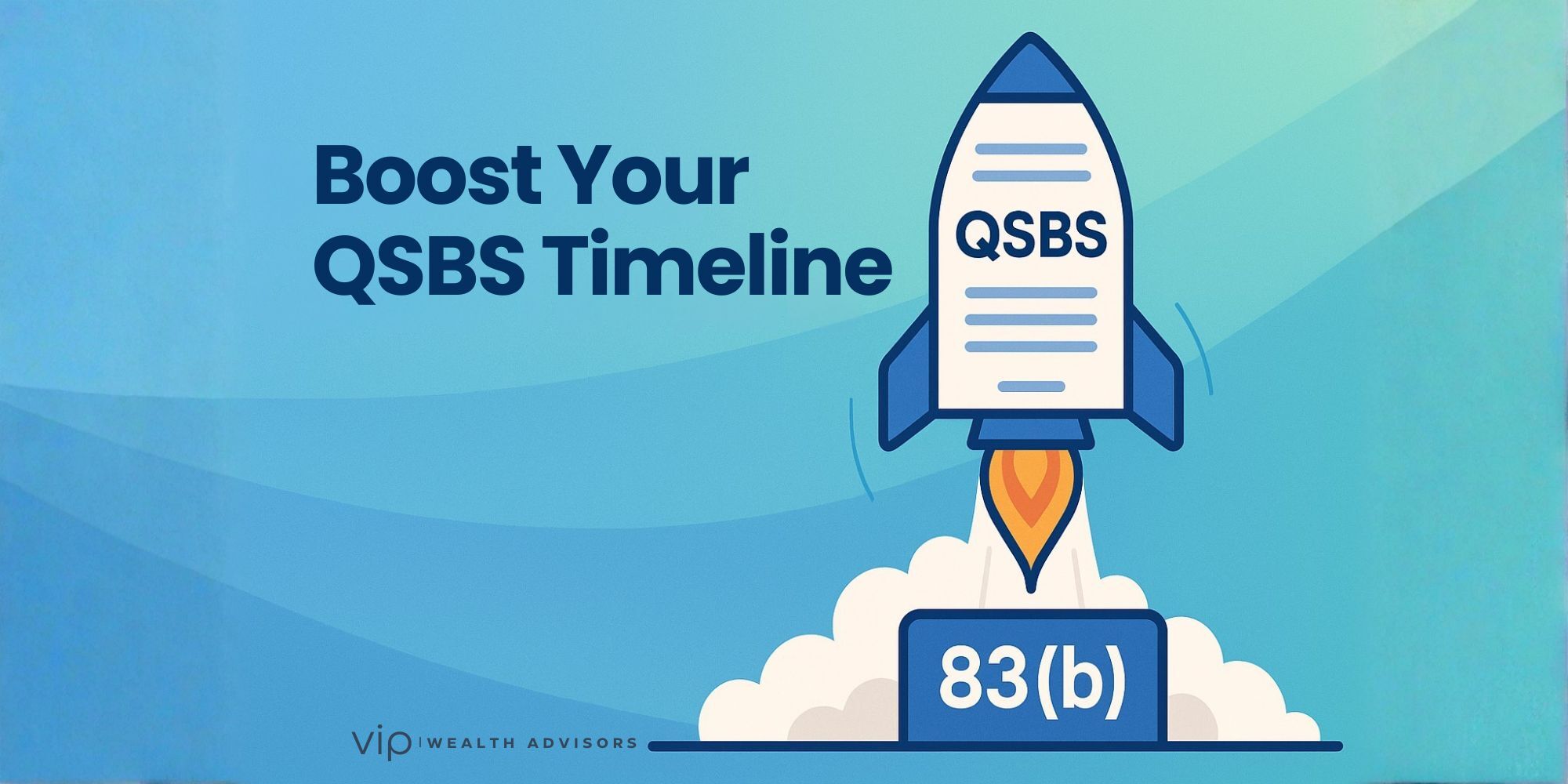For high-income, self-employed individuals and small business owners with no full-time employees, the Solo 401(k) remains the gold standard for tax-efficient retirement savings. Whether you're running a business as a sole proprietor, single-member LLC, or S corporation, this plan offers unrivaled flexibility and generous contribution limits.
In this comprehensive guide, we’ll walk through everything you need to know about Solo 401(k)s in 2025—including the latest IRS limits, key deadlines, business structure nuances, and planning tips.
Who Can Use a Solo 401(k)?
A Solo 401(k)—also called an Individual 401(k), Uni-K, or Self-Employed 401(k)—is designed for:
- Self-employed individuals with no employees and
- Owner-only businesses, with or without a spouse on the payroll
If your business employs full-time workers (1,000+ hours/year) or long-term part-time workers meeting SECURE Act thresholds, a Solo 401(k) may no longer be an option. Otherwise, it’s a powerful retirement vehicle for consultants, freelancers, independent contractors, and small business owners.
2025 Solo 401(k) Contribution Limits
The IRS raised the limits for 2025, allowing even greater pre-tax or Roth savings.
✅ Total Annual Contribution Limit (IRC §415(c))
- $70,000 for those under 50
- $77,500 with $7,500 catch-up contribution for those 50 or older
This includes employee deferrals, as well as employer contributions.
✅ Employee Elective Deferrals (IRC §402(g))
- Up to $23,500
- Plus $7,500 catch-up for age 50+
These can be pre-tax or Roth, depending on your plan’s features.
✅ Employer Contributions
- Up to 20% of net earnings (for sole props/LLCs), or
- 25% of W-2 wages (for S corps)
💡 The employer portion is always pre-tax—unless your plan supports Roth employer contributions under SECURE 2.0.
Contributions by Business Structure
Let’s examine how contribution calculations vary depending on your business entity.
🔹 1. Sole Proprietors and Single-Member LLCs (Disregarded Entities)
Your contribution is based on net self-employment income from Schedule C, minus the deduction for 50% of self-employment tax.
Example:
- Net Schedule C income: $160,000
- Subtract half SE tax (~$11,300)
- Adjusted net income: ~$148,700
You can contribute:
- $23,500 (employee)
- 20% of $148,700 = ~$29,740 (employer)
- Total = $53,240
- Or $60,740 if age 50+
📌 Remember: You can only defer up to 100% of net earnings, capped at $23,500.
🔹 2. Single-Member LLCs Taxed as S Corporations
If you’ve elected S corp status, your contributions are based on W-2 wages, not business profits or distributions.
Example:
- W-2 salary to owner: $120,000
- $23,500 employee deferral
- 25% of $120,000 = $30,000 employer contribution
- Total = $53,500, or $61,000 if age 50+
S corp profits (K-1 income) don’t count toward Solo 401(k) contributions. Only your payroll does.
💡 Planning strategy: Optimize your W-2 salary to balance payroll tax efficiency and retirement contribution headroom.
🔹 3. Multi-Owner S Corporations
The same rules apply. Each shareholder-employee can contribute based on their individual W-2 wage, assuming no other employees qualify under long-term part-time rules.
Spouses working in the business can also participate and double the household’s total contributions.
Roth Solo 401(k): Pre-Tax vs. Roth Contributions
Solo 401(k)s often allow Roth employee deferrals, giving you the option of:
- Paying tax now → tax-free withdrawals later (Roth)
- Reducing taxable income now → taxed in retirement (pre-tax)
Starting in 2023, thanks to SECURE 2.0, employer contributions can be designated as Roth if your plan and provider support it. As of 2025, adoption is still rolling out among major custodians.
🧠 If you’re early in your career or expect to be in a higher tax bracket later, Roth deferrals can be powerful.
Solo 401(k) Deadlines
| Deadline Type | Due Date |
|---|---|
| Plan Establishment | December 31, 2025 (to make 2025 contributions) |
| Employee Deferral Election | Must be made by Dec 31, 2025 |
| Contribution Funding | By your tax filing deadline, incl. extensions: |
| - Sole Prop/LLC | April 15 or Oct 15, 2026 |
| - S Corp | March 15 or Sept 15, 2026 |
If you miss the plan establishment deadline, you can’t retroactively contribute for 2025.
Spousal Contributions
If your spouse works in the business and earns compensation, they can contribute just like you.
- $23,500 employee deferral
- Up to 25% employer contribution (based on salary/net income)
- $7,500 catch-up if 50+
This allows $140,000+ in combined household contributions, assuming sufficient business income.
Solo 401(k) Loans
Many Solo 401(k) providers allow loans of:
- Up to $50,000, or
- 50% of the vested balance, whichever is less
Repayments must be made quarterly, over five years (unless used for a primary residence). Interest is paid back into your own account.
📌 Loan defaults are considered taxable distributions and may trigger a 10% early withdrawal penalty.
Rollover & Consolidation Options
Solo 401(k)s accept roll-ins from:
- Traditional IRAs
- SEP and SIMPLE IRAs
- Old 401(k) and 403(b) plans
Rollovers help you consolidate assets and possibly increase your loan availability (loan limits are based on account balance).
IRS Form 5500-EZ
If your Solo 401(k) balance exceeds $250,000, you must file Form 5500-EZ by July 31, 2026.
Penalties for late filing can reach $250/day, so don’t miss this requirement.
You don’t need to file anything with the IRS below that asset threshold unless you’re closing the plan.
SECURE Act and Long-Term Part-Time Employees
The SECURE 2.0 Act expanded 401(k) eligibility rules for part-time workers, requiring that those who work 500+ hours for two consecutive years become eligible.
This provision doesn’t apply to Solo 401(k)s unless you hire non-owner employees. If your business grows and adds team members, you may need to convert to a traditional 401(k) plan.
Choosing the Right Solo 401(k) Provider in 2025
Your choice of provider will depend on features you need:
| Provider | Pros | Considerations |
|---|---|---|
| Fidelity | No fees, solid support | No Roth employer contributions |
| Vanguard | Low-cost index funds | Limited loan/Roth features |
| E*TRADE | Roth, loans allowed | Less flexible for advanced use |
| MySolo401k.net, Rocket Dollar | Self-directed, checkbook control | Fees apply, and more complexity |
If you want to invest in real estate, crypto, or do Roth employer contributions, consider a customized Solo 401(k) with a self-directed provider.
Tax Reporting Summary
| Entity Type | Where Contributions Appear |
|---|---|
| Sole Prop | Schedule 1, Line 15 + Schedule C |
| S Corp | Form 1120-S (employer contrib), W-2 Box 12 (employee deferral) |
| Form 5500-EZ | Required if balance > $250k |
| Form 1099-R | Only if distributions are made |
Final Thoughts
With a $70,000 contribution limit ($77,500 if 50+), optional Roth features, and the ability to borrow against your own balance, the Solo 401(k) is a cornerstone of tax and retirement planning for self-employed individuals in 2025.
However, the real value lies in how well you align the plan with your business structure and personal tax strategy. Whether you’re a consultant, freelancer, or S corp owner paying yourself wages, getting the structure right ensures you don’t leave money on the table.








